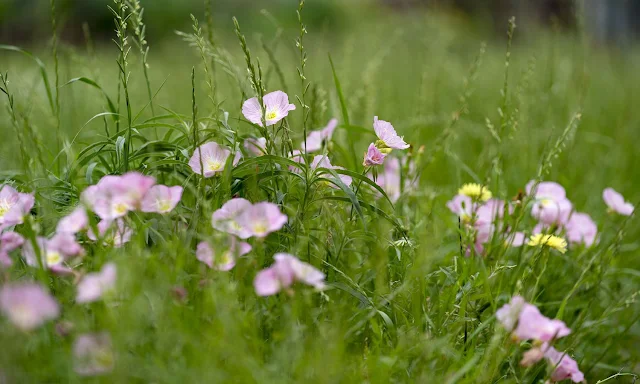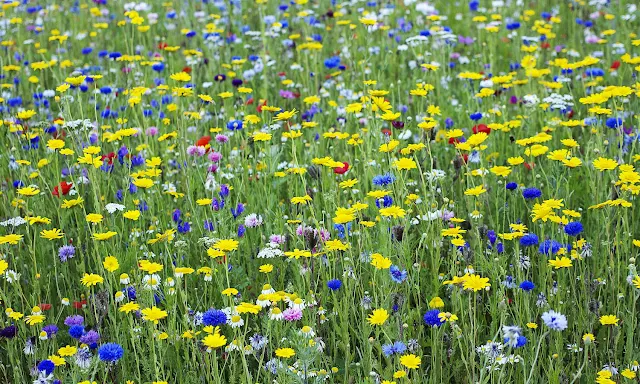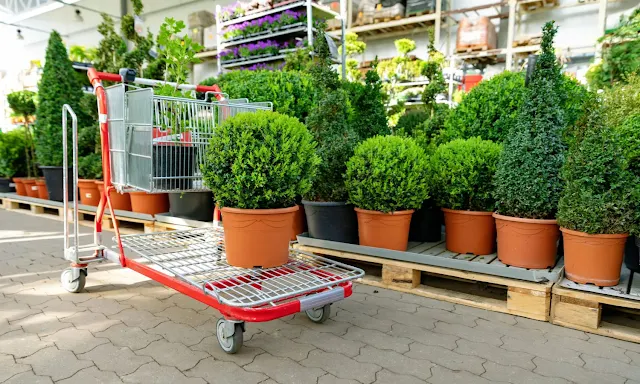Wildflower Gardening Tips for Beginners
Wild Flower Gardening Tips for Beginners - Wildflower gardening is a great option, but you must know the basics. There are many beautiful wildflowers with various patterns to make your yard more vibrant. Learning to plant wildflowers is very easy if you know the correct method.
 |
| Wildflower Gardening Tips for Beginners |
Some Good Wild Flower Gardening Tips
You can plant wildflowers in spring or fall to form germinating seeds. Time to plant depends on geographic location and climate.
The best time is to sow before the rainy season and spring because plants need light to develop. Here are some excellent wildflower gardening tips:
1. Plant Seasonal Flowers
Plant seasonal wildflowers for wildflower gardening if you want plants to flower quickly. Seasonal wildflowers grow and bloom within 2 - 3 months after planting their seeds but usually die after one season.
These plants flower for approximately two months before finally dying when the first frost arrives in winter. Choose from several well-known types of flowers, such as paper flowers (zinnia), orange kenikir (cosmos), purple daisies (prairie aster), and evening roses.
2. Plant Wild Perennial Flowers
Wildflowers can be a gardening idea. Perennial wildflowers will only flower once they mature the following year, but these types can live for many years.
Perennial plants only flower for two weeks a year, but their roots can survive the winter and will grow again the following season.
Plant attractive wild perennial flowers such as Gaillardia (blanket flower), Liatris spicata (Blazing star flower), and Forget-me-not (Myosotis).
3. Choose a Place with Full Sun Exposure
Wildflowers need sunlight to develop. Different from other plants, wildflowers can grow in partially dry soil and are rarely damaged by heat. Therefore, choose a planting location that gets lots of sunlight to shine on it.
4. Use a Non-residual Herbicide
For wildflower gardening to run smoothly, you must use a non-residual herbicide after the plants grow to kill the weeds. Get rid of existing weeds by using a unique herbicide.
You can use a non-residue brand so that the herbicide is no longer active. Spraying herbicides on weeds must be evenly distributed so that your favorite plants do not die.
In the meantime, you can use pre-emergent herbicides to till the soil. Do this before weeds appear which can make the seeds fail to grow.
5. Check Soil Drainage
Most wildflower species grow well in soil with good drainage. For wildflower gardening, dig holes in the ground 30 - 45 cm wide and 30 - 45 cm deep to see how well the soil drains. Then, put water in the hole. Soil drainage is poor if the water is only absorbed after one hour.
 |
| Check Soil Drainage |
6. Perform Aeration If the Soil is Drained
When wildflower gardening, you need to aerate by adding organic matter if the soil is drained. To loosen it, hoe the topsoil to a depth of 20 cm with a hoe or shovel.
Add 5 cm of organic material, such as vermiculite, sand, compost, or perlite, to the soil. Then, stir the organic material for the soil mixture until it is evenly distributed.
Organic matter should comprise about 25 to 50 percent of all the soil. The soil is not aerated if it is lower than 25 percent. Meanwhile, plant growth will be hampered if it is above 50 percent. You can buy organic materials at plant stores or garden supplies.
7. Use Nitrogen Fertilizer
The soil pH level needs to be 6 - 6.5. To achieve this, you can use nitrogen fertilizer. Choose nitrogen fertilizer with nitrate content for good results.
Then, you also have to buy fertilizer at a trusted garden supply store. Next, stir the fertilizer and soil with a hoe or shovel.
 |
| Use Nitrogen Fertilizer |
8. Enter the Sulfur Element
Lowering the soil pH level to 6 - 6.5, the soil can be done by using acid. You can purchase elemental sulfur from garden supply stores, hardware stores, or online.
After that, mix it into the ground according to the recommended instructions. Do this activity for approximately two months before the seeds are planted because sulfur takes time to work.
9. Buy Seeds in Propagation at the Nursery
It would help to buy seeds from propagation at a local seedling for wildflower gardening. Purchase wildflower seeds at a nursery to get species to thrive in your local climate.
It would help to buy "nursery-bred" seeds. This way, sources for gardening ideas are taken from various plant populations.
In Indonesia, there are many species of outdoor flowers that you can buy at local plant shops or on the internet. If you want to plant non-local flower species, first find out the needs of the flowers and make sure the local soil and weather conditions are suitable for producing them.
 |
| Buy Seeds in Propagation at the Nursery |
10. Plant Seeds in Early Spring
The best time to plant wildflower gardening seeds is in early spring or fall. Because wildflower species cannot withstand winter frosts. Plant from March to May so wildflowers have seeds before summer arrives.
Meanwhile, plant species thrive in cool temperatures from September to November (in the fall). Seeds planted around November will remain dormant until next spring arrives.
You should only plant species that can survive the summer heat. If it is not strong, the seeds will not be able to germinate.
 |
| Plant Seeds in Early Spring |
11. Plant Each Wildflower Species One By One
The seed size of different wildflower species will vary. It will make it difficult for you to distribute it evenly. You can overcome this by planting plants one by one.
Plant all species in equal amounts in the same spot to build a diverse flower mix. You can also plant each species in a separate area for a varied display throughout the garden.
12. Spread the Sand and Grain Mixture
Spreading wildflower seeds is usually tricky. Therefore, mix wildflower seeds (one seed) with four parts of sand in a container, then stir until smooth.
This way, the seeds will avoid clumping or uneven mixing. After that, to stimulate germination, bring the roots of the plant into the upper layer of the ground.
 |
| Spread the Sand and Grain Mixture |
Conclusion
For wildflower gardening, plant a mix of seasonal, biennial, and perennial (long-lived) wildflowers so you have plants that bloom all year round, from the beginning to the end of the season.


Post a Comment for "Wildflower Gardening Tips for Beginners"
Post a Comment